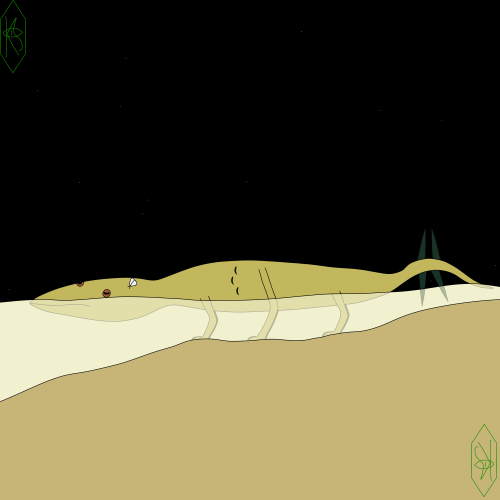Psammus, More Commonly Called A Sand Mouse, Are Large Nihlimus Which Wander The Maschoran Deserts At



psammus, more commonly called a sand mouse, are large nihlimus which wander the maschoran deserts at night and hide in abandoned burrows during the day, they frequently eat ostoexoapo as well as carrion, and they have been known to steal eggs from nests as well as taking down weak small ostomesa, they fill a niche similar to a telluric fennec fox, they rely almost exclusively off of the prey for hydration, they have evolved front teeth similar to a telluric rodent on the top of their teeth for piercing the shells of ostoexoapo, they also work for tearing the leathery eggshells of ostomesa, if you have any questions at all about this seelenlos please dont be afraid to ask im more than happy to answer
-
 beeb-oob liked this · 2 years ago
beeb-oob liked this · 2 years ago -
 drawingsphopho liked this · 2 years ago
drawingsphopho liked this · 2 years ago
More Posts from Speculative-world
hiatus continuing due to my computer problems continuing
when i get my data back, about a year from then i will be starting one of the other planets, that being said


platykaktos, more commonly called a plate cactus, these sedereamischos grow with a form of fractal symmetry, growing two plates off of every plate, though these plates get thinner and smaller the farther away from the base they get, they also tilt around 5° from their baseplate, they have pores in their plates that produce a large quantity of spores which is the dust you can see on the platykaktos, if you have any questions about this sedereamischos please dont be afraid to ask im more than overjoyed to answer



kleptosuchus, more commonly called desert webbedpaws, are seelenlos which wander in and around bodies of ammonia which they can hide in, filling a similar niche to a telluric crocodillian, they will wait inside bodies of ammonia when they hear a seelenlos getting closer and then will jump out of the ammonia and latch onto whatever prey they get, they will then drag them into the ammonia and hold them down till they drown, they are cathemeral and will spend most of the day and night sleeping in the ammonia they inhabit, when they wake they will stealthily wander the ammonia till they encounter a seelenlos in which they will wait at the ammonias edge and wait for them to come near, if you have any questions about this seelenlos please dont be afraid to ask im more than overjoyed to answer


mycostepho, more commonly called a crown wart, are solumykitas which form frequently in rivers, and in very nutrient dense areas of lakes, they tend to have 16 spikes which each produce thousands of spores a second, these spores will grow into mycostepho under the substrate, only producing the wart when they have enough nutrients to reproduce, these spores can reproduce on their lonesome when they reach the substrate, however if they interact with another spore they will fuse mixing their genomes as a form of sexual reproduction, if you have any questions about this solumykitas please dont be afraid to ask im more than overjoyed to answer
